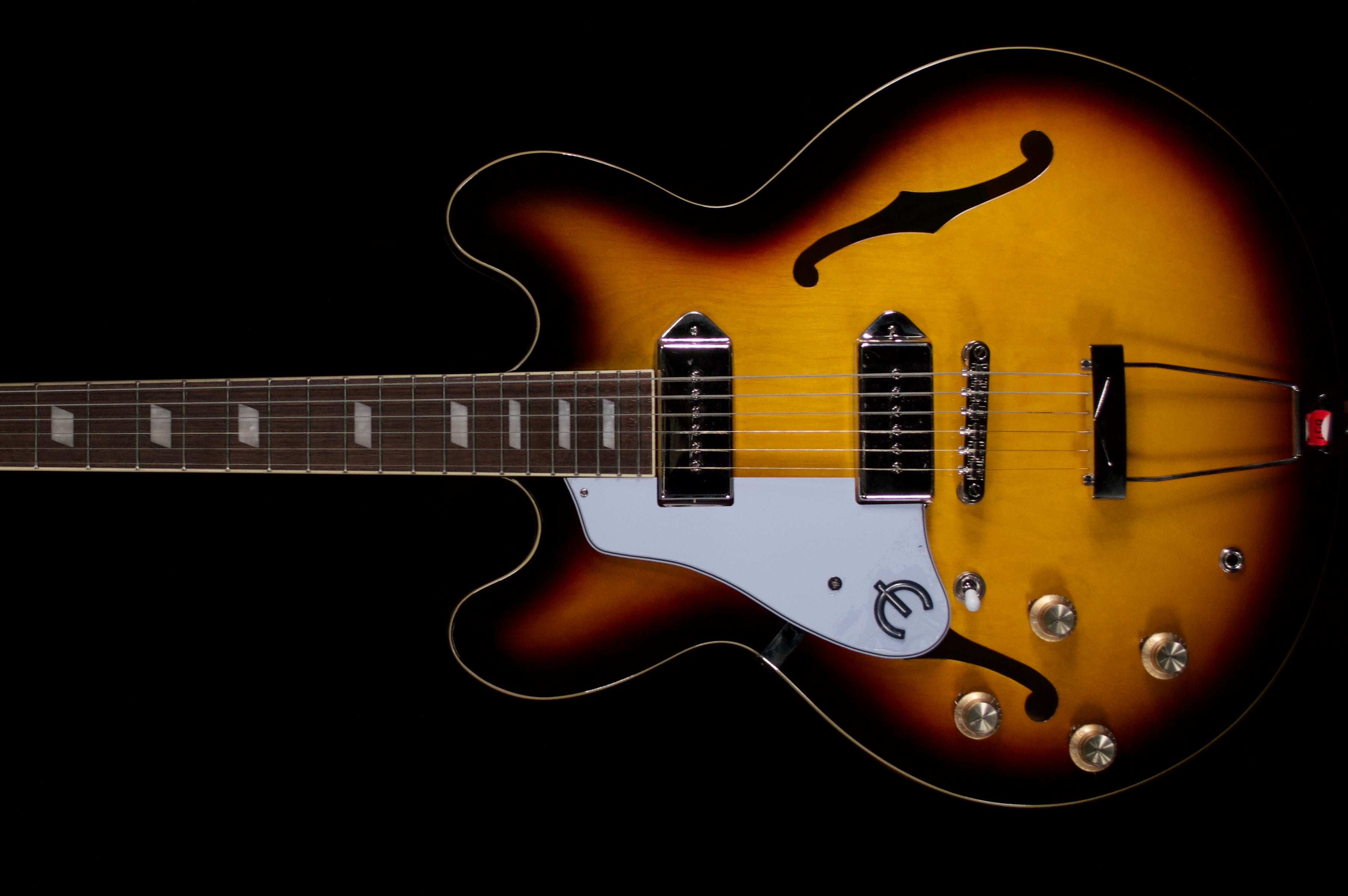The history of left-handed guitars is a fascinating journey marked by innovation, adaptation, and the perseverance of left-handed musicians in a predominantly right-handed world. Below is an exploration of the key milestones, challenges, and notable figures in the development and cultural impact of left-handed guitars, drawing on historical context and the contributions of iconic players.
Early Challenges and Adaptation
The guitar, like many stringed instruments, evolved over centuries with no single inventor, and early designs did not account for handedness. By the 19th and early 20th centuries, guitars were primarily built for right-handed players, reflecting the societal bias toward right-handedness—only about 10% of the population is left-handed. Left-handed players faced significant hurdles, as left-handed guitars were either nonexistent or prohibitively rare and expensive. This scarcity forced left-handed guitarists to adapt in creative ways, including:
- Flipping Right-Handed Guitars: Many left-handed players, such as Jimi Hendrix, Albert King, and Dick Dale, played right-handed guitars upside down, often restringing them to reverse the string order (low E string at the top for left-handed playing).
- Playing Upside Down Without Restringing: Some, like Otis Rush, played right-handed guitars upside down with the strings in their original order, requiring them to adapt their technique to the reversed string layout. This approach led to unique playing styles, as the high strings were on the bottom, altering chord voicings and soloing techniques.
- Modifying Instruments: Left-handed players often modified right-handed guitars by changing the nut, bridge, and sometimes internal bracing to accommodate left-handed stringing. These modifications were necessary for proper intonation and playability but required technical skill and access to resources.
Cultural attitudes also posed challenges. Up until the 20th century, left-handedness was often stigmatized, with left-handed children forced to use their right hands for tasks like writing. This societal pressure extended to music, where left-handed players were sometimes encouraged to play right-handed instruments, as seen in the case of Jimi Hendrix, whose father believed playing left-handed was a “sign of the devil.”
Early Left-Handed Guitars
The earliest known left-handed guitar from a major manufacturer is a 1915 Gibson L-4, documented as the oldest known left-handed Gibson. This acoustic guitar, with an oval soundhole and 12 frets to the neck, was a rare factory-built left-handed model, indicating that some manufacturers were beginning to recognize the needs of left-handed players. However, such instruments were exceptions, and most left-handed guitarists relied on custom orders or modifications.
Gibson’s L-4, introduced in 1911, was a significant model in jazz, played by right-handed players like Eddie Lang, but the 1915 left-handed version suggests that boutique or custom production for left-handed players existed, albeit on a small scale. The rarity of such guitars underscores the economic challenges: left-handed guitars were produced in smaller quantities, increasing manufacturing costs and limiting availability.
Mid-20th Century: Rise of Iconic Left-Handed Players
The mid-20th century marked a turning point as left-handed guitarists began to gain prominence, challenging the right-handed status quo and inspiring future generations. Key figures include:
- Slim Whitman (1923–2013): A country artist who played left-handed due to the loss of two fingers on his left hand, Whitman inspired Paul McCartney to switch to left-handed playing after McCartney saw a picture of him.
- Elizabeth Cotten (1893–1987): A folk and blues guitarist, Cotten played a right-handed guitar upside down without restringing, developing a unique fingerpicking style that influenced folk music.
- Dick Dale (1937–2019): The “King of Surf Guitar,” Dale played a right-handed Fender Stratocaster upside down, later receiving a left-handed model from Fender. He kept the strings in the original order, contributing to his distinctive, rapid-fire tone.
- Albert King (1923–1992): One of the “Three Kings of the Blues,” King played a right-handed Gibson Flying V upside down in open tunings, creating a booming, influential blues sound. His technique inspired players like Eric Clapton and Peter Green.
These players demonstrated that left-handedness could be a source of innovation, as their unorthodox approaches led to novel techniques and sounds. However, the lack of left-handed guitars remained a barrier, with most players relying on flipped or modified right-handed models.
The 1960s: Jimi Hendrix and the Left-Handed Revolution
The 1960s were a pivotal decade for left-handed guitars, largely due to Jimi Hendrix (1942–1970), widely regarded as the most famous left-handed guitarist. Hendrix’s innovative approach and virtuosity brought unprecedented visibility to left-handed playing. He primarily played right-handed Fender Stratocasters flipped upside down and restrung for left-handed use, though he was also capable of playing right-handed guitars without modification when necessary (e.g., to avoid his father’s disapproval).
Hendrix’s left-handedness influenced his technique in several ways:
- Tremolo Arm Positioning: The upside-down Stratocaster placed the tremolo arm in a position that discouraged palm muting, allowing strings to ring freely and contributing to his fluid rhythm-lead style.
- String Tension: The reversed headstock altered string tension, making treble strings looser and facilitating Hendrix’s signature string bends.
- Pickup Angle: The reverse-angled bridge pickup on his Stratocaster reduced piercing treble, enhancing his tonal palette.
In 1969, Hendrix custom-ordered a left-handed Gibson Flying V, which he used during his Band of Gypsys performances and famously at the 1970 Isle of Wight Festival. This guitar symbolized the growing recognition of left-handed players by major manufacturers. Hendrix’s influence inspired countless guitarists and pressured companies like Fender and Gibson to produce more left-handed models, though availability remained limited.
Paul McCartney and Mainstream Acceptance
Paul McCartney (b. 1942), another iconic left-handed musician, further legitimized left-handed playing. Initially struggling with a right-handed guitar, McCartney switched to left-handed after seeing Slim Whitman, restringing his Zenith guitar to suit his natural handedness. As a bassist and guitarist for The Beatles, McCartney’s visibility—often seen with his guitar neck extending opposite John Lennon’s on stage—made left-handed playing aspirational.
McCartney’s use of left-handed Höfner basses and later left-handed Gibson Les Pauls (including a rare 1959 model) highlighted the need for dedicated left-handed instruments. His success, combined with Hendrix’s, helped normalize left-handed guitars in popular music, encouraging manufacturers to expand their offerings.
1970s–1980s: Growing Availability and Tony Iommi’s Influence
The 1970s saw gradual improvements in the availability of left-handed guitars, driven by demand from players and the influence of figures like Tony Iommi (b. 1948), the left-handed guitarist of Black Sabbath. Iommi’s story is one of resilience: after losing the tips of his right-hand fingers in a factory accident, he crafted homemade prosthetic fingertips and detuned his Gibson SG to reduce string tension, inadvertently shaping the heavy, dark sound of heavy metal.
Iommi initially played a right-handed SG upside down due to the scarcity of left-handed models in the UK but later acquired a left-handed SG, which became his signature instrument. Gibson and Epiphone honored him with left-handed signature models, reflecting the growing market for left-handed guitars. Iommi’s contributions, alongside those of Hendrix and McCartney, solidified the left-handed guitar’s place in rock and metal.
During this period, Fender began producing left-handed versions of models like the Stratocaster and Telecaster, though in limited quantities. The 1951 Butterscotch Fender Telecaster, noted as the first left-handed Telecaster, is a rare example from the early days of electric guitars. However, left-handed guitars remained more expensive due to smaller production runs and the need for specialized tooling, such as CNC programming and custom jigs.
1990s: Kurt Cobain and the Grunge Era
The 1990s brought left-handed guitars into the grunge spotlight with Kurt Cobain (1967–1994), the frontman of Nirvana. Although naturally right-handed, Cobain chose to play left-handed, possibly due to ambidexterity or personal preference. He started with affordable Univox guitars, flipping them for left-handed use, and later used left-handed Fender Mustangs, Jaguars, and the custom-designed Jag-Stang.
Cobain’s choice of a left-handed Fender Jaguar in 1991 was serendipitous, as it was one of the few quality left-handed guitars he could find. Its short scale and unique sound shaped Nirvana’s grunge aesthetic, influencing the offset guitar’s cult following. Cobain’s accessible playing style—favoring power chords and melody over flashy solos—made left-handed guitar playing approachable for beginners, further boosting demand for left-handed models.
21st Century: Modern Innovations and Representation
Today, left-handed guitars are more accessible than ever, though they still represent a small fraction of the market—estimated at 6–7% of guitar sales, as only about 10% of people are left-handed, and some left-handers play right-handed. Major brands like Fender, Gibson, Ibanez, and PRS offer left-handed versions of popular models, including the RG, S, and SA series from Ibanez and signature models for players like Tony Iommi.
Modern left-handed guitarists continue to push boundaries:
- Courtney Barnett (b. 1987): An Australian indie rock artist, Barnett uses left-handed Fender electrics and Maton acoustics, showcasing versatility in contemporary music.
- Mdou Moctar (b. 1984): A Nigerien guitarist blending Tuareg and desert blues, Moctar plays left-handed, often on homemade or adapted instruments, highlighting global perspectives in left-handed guitar playing.
- Malina Moye (b. 1984): A rock and blues guitarist, Moye plays an upside-down right-handed Fender Stratocaster, continuing the tradition of innovative left-handed techniques.
Despite progress, challenges persist. Left-handed guitars are often more expensive due to economies of scale, and some models, like the PRS Silver Sky, are unavailable in left-handed versions. Additionally, left-handed players may face difficulties finding instructional materials tailored to their needs, though online resources like LeftyFretz.com have emerged to address this gap.
Cultural and Scientific Perspectives
Left-handed guitarists have historically produced a disproportionate number of influential musicians, possibly due to neurological advantages. Studies suggest left-handers may have more developed right brain hemispheres, enhancing creativity and spatial reasoning, which could contribute to their innovative playing styles. The need to adapt to a right-handed world may also foster problem-solving and resilience, as seen in players like Iommi and Hendrix.
The debate over whether left-handers should play left- or right-handed guitars continues. Some argue that the fretting hand (left on a right-handed guitar) requires more dexterity, suggesting left-handers might excel playing right-handed. However, the existence of left-handed guitars and the preference of players like Hendrix to flip guitars indicate that dominant-hand picking/strumming is often more natural. Ultimately, comfort and personal preference guide the choice.
Conclusion
The history of left-handed guitars is a story of overcoming adversity through ingenuity and talent. From early players flipping right-handed guitars to modern artists wielding factory-built left-handed models, left-handed guitarists have left an indelible mark on music. Icons like Jimi Hendrix, Paul McCartney, Tony Iommi, and Kurt Cobain not only shaped their genres but also drove demand for left-handed instruments, making them more accessible today. While challenges like cost and availability persist, the legacy of left-handed guitarists continues to inspire, proving that being a southpaw is not a limitation but a source of unique creativity.
For further exploration, resources like Uncommon Sound: The Left-Handed Guitar Players That Changed Music by John Engel offer detailed insights into the instruments and stories of left-handed guitarists. Additionally, websites like LeftyFretz.com and communities on platforms like X provide ongoing support and news for left-handed players.

